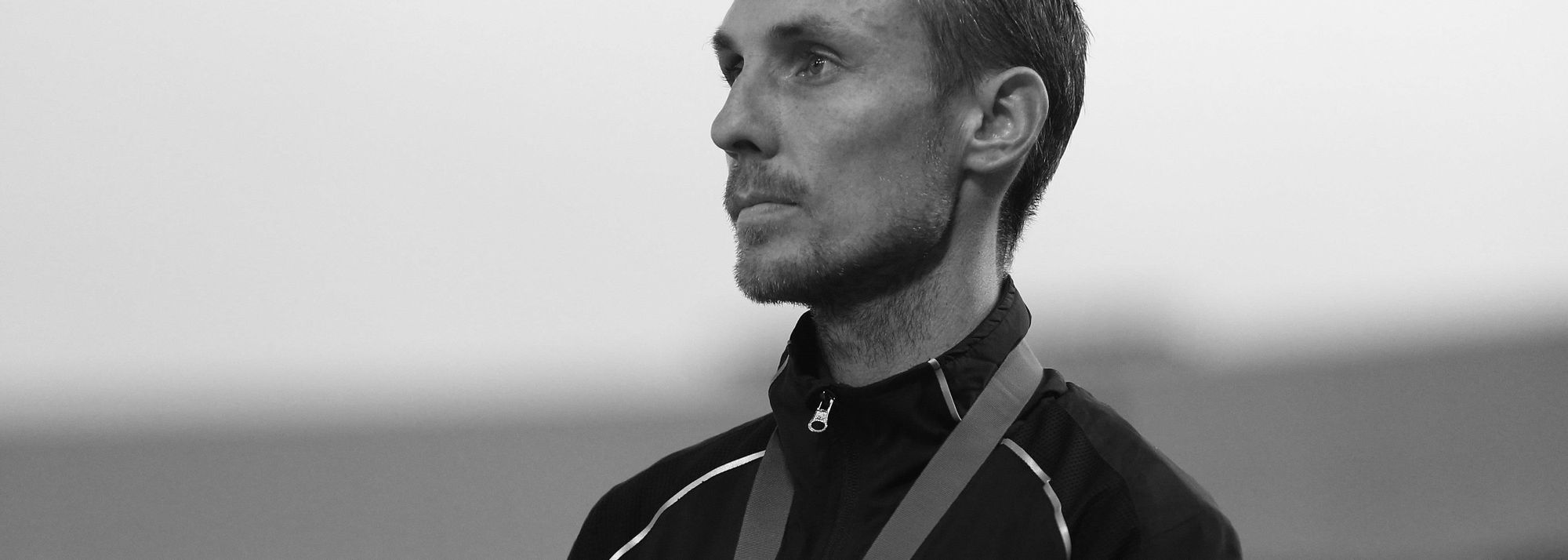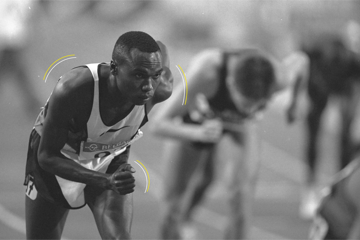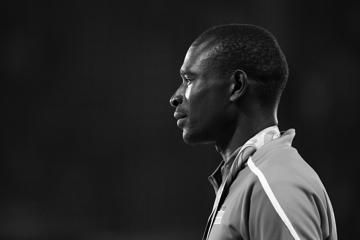Nick Willis
by Nick Willis
As a teenager, I never thought it would last this long. What did I think of back then?
I hope I can make it to the Olympics. I hope I can make a final. Maybe I’ll even win a medal.
But racing the world’s best at the age of 36? No, that was never in my plans. I always thought that by the time I hit 30, my body would have given out.
But year on year, that attitude started to change.
Psychologically, I’ve never felt old. Growing up, I was the youngest in my grade. I’m the youngest of my siblings, the youngest of my friends. That attitude always carried over into athletics. But more and more, you get reminded of your age. Someone comes up before a race and says, “Can I warm up with you, sir?”
“Sir?”
But then it hits you: I’m almost twice his age.
But that doesn’t make me want to walk away. I’ve been to four Olympics already, and I’d love to make it a fifth in Tokyo.
People sometimes ask about the key to my longevity and, while I don’t have anything concrete, I have theories.
Number one: sleep.
I’ve always gone to bed early and woken up at a consistent time and it’s only in recent times I’ve realised how valuable that is for athletes. When I was a teenager, I went to bed at 9pm and woke up at 7am, always getting 10 hours of sleep. In college, even when I partied a little more, I always went to bed at a good hour.
In recent times I’ve been reading a lot about REM sleep and it’s such a huge component in recovery. Because I’m always getting the full amount of sleep and not disrupting it with alcohol – which affects REM sleep – it’s an area of the athlete lifestyle I’ve done right ever since I was a kid.
Number two: patience.
I’ve taken a day off each week almost all of my career which has, for the most part, helped me stay on the right side of overtraining.
I’ve still had a high number of serious injuries: four surgeries, several stress fractures and several strained tendons and muscles. All of those required at least three months out and that’s the hardest thing for most athletes: can they afford financially to go through that rehab process properly? I was lucky to have great sponsors – Reebok in the early part of my career and now adidas – and they always allowed me to dedicate proper time to rehabilitation.
The third factor in my longevity is more subtle, but equally important. For the past several years, my family has travelled with me throughout the year.
A lot of athletes spend so much time away from their family and that drains on you, but I never feel like I’m away from home because we’re always together.
My wife, Sierra, is both a coach and manager for me and with our two kids, we’re a family business. Instead of staying at meet hotels we’ll often book our own apartment, shop in local grocery stores, see the sites together. Because of that, I don’t feel the exhaustion of wanting to stop this.
Don’t get me wrong. There are times I want to move on in life but by and large, I enjoy the routine. It’s mostly getting out and getting fit, enjoying the trails and exploring God’s creation. The hard stuff is only the final ten percent: the workouts and gym sessions.
I learned so much of what I know from my older brother. Steve was a sub-four-minute miler, but had to stop running with knee problems at the age of 25.
When I was a teenager, my father’s anxiety about Steve’s injuries carried over to me, which paved a straight and narrow path for my career. Even at 17, I was very, very cautious about managing the overall volume, the types of training and the surfaces I was running on.
I’ve always erred on the side of being healthy and under-trained rather than over-trained, tired or injured.
In training, I’ve always limited the real killer workouts, the stuff that gets you into oxygen debt early and forces you to grind through. That takes a lot of soul, a lot of psychological energy, whereas with threshold training or sub-VO2-max work, they’re building blocks that you can just keep building and building and building.
After that, you just need to top it off with a bit of faster work, and that’s how a lot of middle-distance runners train these days. I was lucky to discover that early on by training with Tim Broe, the 5K runner at Michigan. He mentored me on training theories and methodologies and my coach, Ron Warhurst, went along with it.
I try to pass on those lessons to young athletes. Sometimes I do it through social media, but half the time I tweet advice it’s to remind myself what I should be doing. An example is the temptation to smash hard workouts to build confidence.
I’ve done it, but then you ask yourself: what’s the purpose of training? It’s to race well, not to prove anything to anyone. For all my experience, last year I again fell into that trap. But every year we try to do something slightly different. Nothing’s ever perfect.
The biggest mistake I see in young athletes is rushing back from injury.
There’s always a race to make some money so I always tell them: Let your health, your training and your fitness determine what races you choose as opposed to pre-determining when you have to be ready. Once people get into an injury cycle, they often stay in it and the reason is they’re always forcing it to get back: next race, next championship. Because of that, they never really reach their full potential.
The truth is it takes a good two years of healthy training to know what you’re capable of so you’ve got to take the long-term approach. From my experience, you’ll end up being better short-term anyway if you take the long-term approach. Skipping phases of training is never productive – it catches up to you super-quick.
Of course there are other ways to cut corners, like doping. But my attitude to that is always the same: no matter what, you can’t let your results against other people define why you do this sport.
The beauty about running is it’s a very measurable sport against yourself and that, ultimately, is what will drive you. I got just as much satisfaction finishing seventh in a Diamond League, when I first broke 3:30, as I did when I won an Olympic medal.
You’ve got to have those internal motivators to keep you going and that's why I've struggled the last couple of years for motivation. I’m not running PRs anymore and deep down, most of us keep going because of that high we get from a personal best.
Even when the playing field isn’t level, it doesn’t mean you can’t win. If you get on the start line enough times, you’ll still beat people whether they’re doping or not. Athletes who cheat don’t necessarily hold a consistent pattern: some guys show up at a championship and look invincible one year and the next year they might look good in the heats then crumble in the final. In the end, you have to be focused on yourself. Even if everyone in the field is clean, you have to have the same motivation: what do I want to get out of this for myself?
That’s the way you can run freely – year in, year out – and enjoy this sport.
Whenever the time comes for me to walk away, I know I’ll enjoy the next phase of life: saying yes to all of the things I’ve said no to over the years like snowboarding, skiing, skateboarding, the adrenaline sports I loved in my teens but tended to avoid later because of the injury risk.
Over the last few years there were times I hated being an athlete, when I’d say to myself I don’t want to do it anymore, but that only ever lasts a couple of days. It’s not running itself I hated; it was the sacrifice and not getting the result that I wanted.
But wherever this journey ends, it’s not going to be retirement in the sense that I stop running. I’ll keep training, and will probably still compete a little – it’ll just be retirement from it being my full-time profession.
The truth is, I genuinely enjoy going for a run or doing a good workout with friends. As long as I’ve been doing it, that simple joy is what keeps me coming back.








